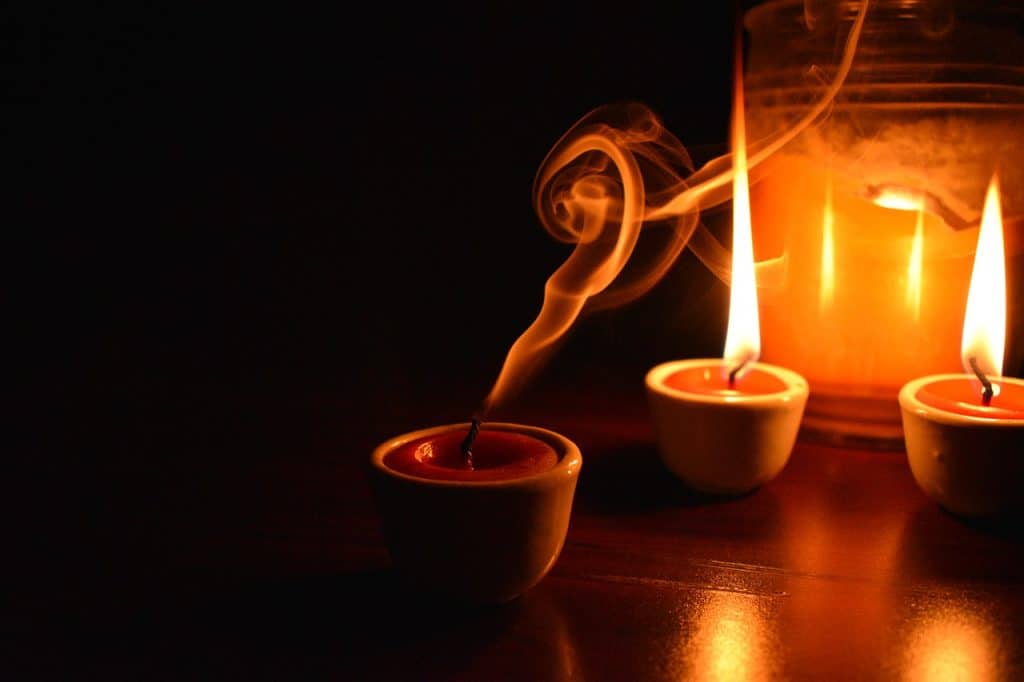Candles are items that have been around for a very long time. There are records that indicate that these amazing objects have been made for thousands of years, and while there are no precise records about the actual identity of their initial inventors, it is easy to see that candles have not experienced any drastic changes in thousands of years. They still operate by the same basic principles.
Due to the high popularity of the electric light bulb, a lot of knowledge about candle making has been lost over time. However, candles are becoming trendy once again.
WHAT IS THE HISTORY OF CANDLES?
Candles have been around for thousands of years. In ancient times, they were mainly made from tallow or boiled down fat derived from the carcasses of cows and other livestock (they are also records that, in some parts of the world, candles were made from fat derived from sharks and other aquatic mammals, although such candles are no longer as common as they used to be; considering the extinction of such creatures). One of the reasons why candles have such a long history, and so many materials have been used in making them is that, for a very long period of time in history, candles were the main source of indoor illumination.

The art of candle making is very old, and has been in existence for thousands of years. Back in the olden days, candle-makers – also known as chandlers – were well known for their skill and talent (this is because many of them used to serve as apprentices to professional and seasoned chandlers until they were able to master the craft completely). During these periods, candle making was considered a guild craft, and chandlers would go from one household to another, in order to make candles for them; using fat in their kitchen, which had been set aside for that express purpose.
As a result of this, many of the candles made during this era – especially at the hands of renowned chandlers – were of very high quality. Over time, however, when tallow candles were rapidly replaced by paraffin wax candles and subsequently the electric bulb; a lot of knowledge and information regarding the art of candle making was lost.
Nowadays, the increasing popularity of aromatherapy has catapulted candles back into the limelight (especially scented candles, which contain fragrances and perfumes that are usually emitted upon candle burning).
THE DIFFERENT KINDS OF CANDLES
Different kinds of candles exist in the world. They may be categorized into different groups, based on different things such as:
- The kind of wax used
Different types of candle wax include; paraffin wax, beeswax, soy wax, tallow or boiled down fat (which is typically derived from the carcasses of cows and other type of livestock), and other kinds of wax, which may be combinations of other types of waxes (in varying percentages).
The type of wax used in making candles affects tends to affect various things about the candle such as its lifespan and how quickly it burns, as well as the manner in which it burns.
Suitable materials for candles should be able to melt well and sustain a flame properly (this is because the kind of candle wax used in making a candle also tends to affect the purity of a flame).
Candles made from tallow or boiled down fat used to be the most popular candles in the world. However, paraffin wax became popular towards the end of the 19th century.

- Color
Candles can be differentiated from one another, based on the color of their wax. The most common type of candles in the world is white candles. Nevertheless, candles also exist in other colors, depending on the type of dye used in making them.
- The kind of wick used in their making
Different types of candles can be distinguished from another based on the type of wick used in their making. The most common types of candle wicks are those made from braided cotton fibers and they are not normally dyed. Candle wicks may also be made from other plant materials and fibers.
The type of wick used in candle making tends to affect the quality of the candle’s flame (e.g. how cleanly it burns), and how quickly the candle burns, in a lot of cases.
WHY PEOPLE WANT TO KNOW MORE ABOUT CANDLES
A lot of people are using candles now, for the purpose of treating and reducing stress among other issues (such as the management of anger issues). This is because the art of aromatherapy involves the inhalation of pleasant and soothing scents, which are ideally derived from natural, plant-based sources.
However, a lot of information related to candle making has been forgotten or lost over the course of several decades; during which other sources of indoor illumination. Yet, with the recent rise in the popularity of scented candles, there are many things that people would like to know about candles.
HOW TO REDUCE CANDLE FLAME SIZE
Sometimes, when a candle is lit, its flame tends to burn a little too high. Sometimes, this can constitute a problem; as the candle wax will tend to melt very fast. This will reduce the lifespan of the candle and its longevity, as well as the ultimate candle burning experience.
Therefore, many people wonder how to reduce candle flame size.
The most popular way of doing this is to trim a candle’s wick before use. The act of trimming a candle’s wick goes a long way in maintaining the quality and lifespan of a candle (this is because long candle wicks can lead to very high flames). All candle wicks should be properly trimmed before use, in order to shorten the wick size (and consequently, the candle flame size). A candle that is properly trimmed will also burn cleanly (i.e. its flames will release little to no soot), and its wax will melt evenly. This goes a long way in preserving the candle’s lifespan.




